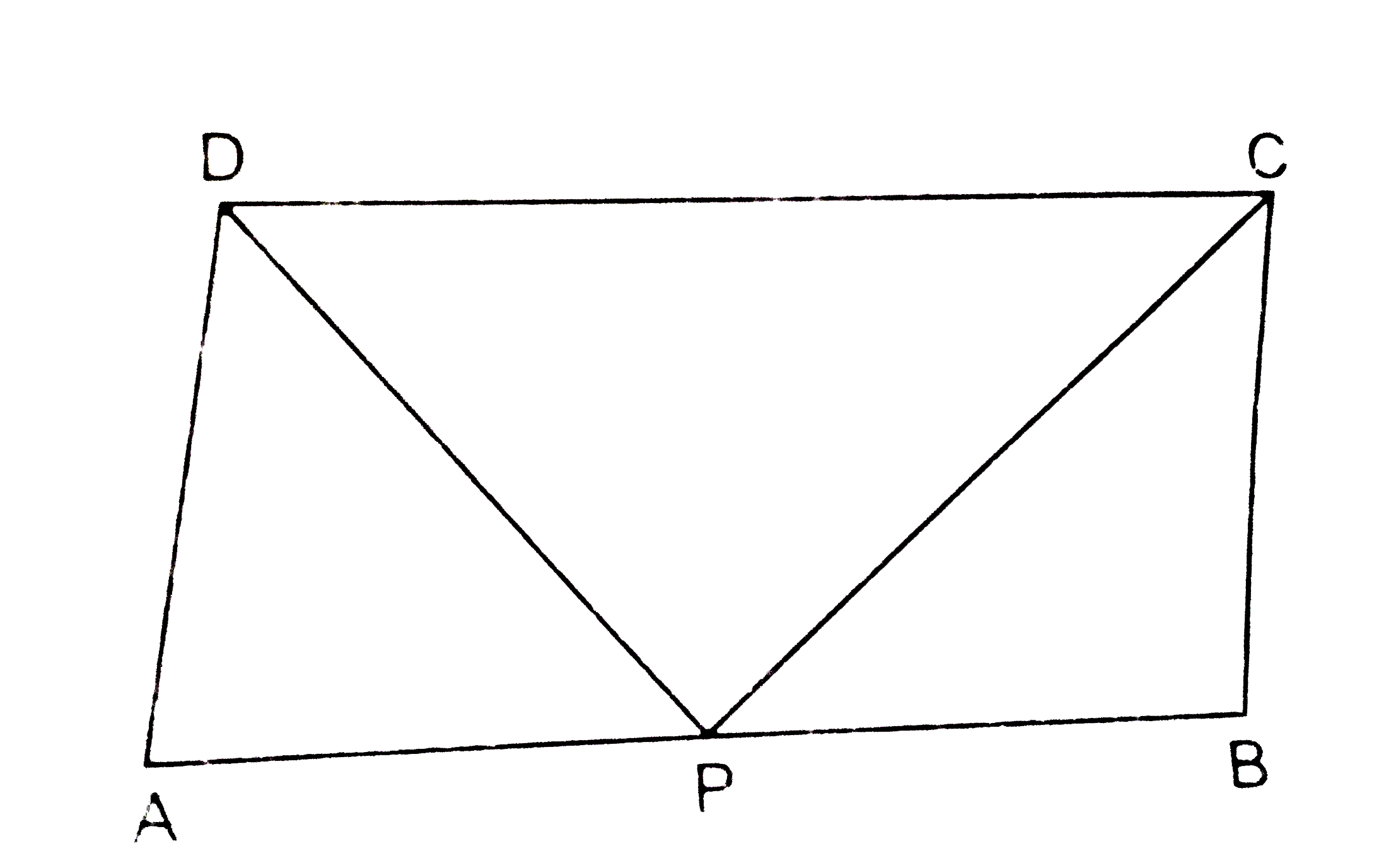Two adjacent sides of a parallelogram ABCD are given by :
−−→AB=2ˆi+10ˆj+11ˆkand−−→AD=−ˆi+2ˆj+2ˆk. The side AD is rotated by an acute angle α in the plane of the parallelogram so that AD becomes AD'. If AD' makes a right angle with the side AB, then the cosine of the angle α is given by Solution in Kannada
89
√179
19
4√59.
The correct Answer is:B
Step by step video, text & image solution for Two adjacent sides of a parallelogram ABCD are given by : vec(AB) = 2hati + 10 hatj+ 11 hatk and vec(AD) =- hati + 2 hatj + 2 hatk. The side AD is rotated by an acute angle alpha in the plane of the parallelogram so that AD becomes AD'. If AD' makes a right angle with the side AB, then the cosine of the angle alpha is given by by Maths experts to help you in doubts & scoring excellent marks in Class 12 exams.
Topper's Solved these Questions
- BOOK - MODERN PUBLICATIONCHAPTER - VECTOR ALGEBRA EXERCISE - RECENT COMPETITIVE QUESTION11videos
VECTOR ALGEBRA
- BOOK - MODERN PUBLICATIONCHAPTER - VECTOR ALGEBRA EXERCISE - Multiple Choice Question (Level-II)38videos
VECTOR ALGEBRA
- BOOK - MODERN PUBLICATIONCHAPTER - UNIT TEST PAPER NO.3EXERCISE - ASSERTION-REASON & COLUMN MATCHING TYPE QUESTIONS (SECTION-B COLUMN MATCHING TYPE QUESTIONS)4videos
UNIT TEST PAPER NO.3
Similar Questions
A space vector makes the angle 150∘and60∘with the positive direction of x and y-axes. The angle made by the vector with the positive direction of z-axis is :
04:15View SolutionIf →a,→b and →c are three non-coplanar vectors and →p,→q and →r are vectors defined by →p=→b×→c[→a→b→c],→q=→c×→a[→a→b→c] and →r=→a×→b[→a→b→c] , then the value of (→a+→b)⋅(→b+→c)⋅→q+(→c+→a)⋅→r =
09:47View SolutionList-IList-II(A)If mean of 27, 31, 89, 107, 156 is 82, then mean of 130, 126, 68, 50, 1 is(i)√2(B)S. D. of scores 1, 2, 3, 4, 5 is(ii)n+12(C)If mode is 18 and mean is 24, then median is(iii)75(D)Mean of first n natural number is(iv)22
07:16View SolutionABCD is a quadrilateral with vec AB=vec a,vec AD=vec b and vec AC=2vec a+3vec b If its area is alpha xx the area of the parallelogram with AB and AD as adjacent sides,then alpha=
View SolutionTwo adjacent sides of a parallelogram ABCD are given by −−→AB=2ˆi+10ˆj+11ˆk and −−→AD=−ˆi+2ˆj+2ˆk. The side AD is rotated by an acute angle α in the plane of the parallelogram so that AD becomes AD'. If AD' make a right angle withe the side AB then the cosine of the angle α is given by
04:16View Solutionचित्र 11 में ,ABCD एक समांतर चतुर्भुज है । यदि AB=2 AD तथा P भुजा AB का माध्य बिंदु , तो ∠CPD का मान ज्ञात कीजिए ।
 04:10View Solution
04:10View SolutionTwo adjacent sides of a parallelogram ABCD are given by AB=2ˆi+10ˆj+11ˆkandAD=−ˆi+2ˆj+2ˆk. The side AD is rotated by an acute angle α in the plane of the parallelogram so that AD becomes AD'. If AD' makes a right angle with the sides AB, then the cosine of the angle α is given by
03:10View SolutionIf →a=ˆi+ˆj+ˆk & →B=ˆi−ˆj+ˆk are the sides of AB & AC of △ABC if AD is the angle bisector of ∠BAC where D lies on BC, then length of AD is
07:09View SolutionLet ABCD be a parallelogram such that −−→AB=→q,−−→AD=→Pand∠BAD be an acute angle. If →r is the vector that coincides with the altitude directed from the vertex B to the side AD, then →r is given by-
03:18View Solutionएक समांतर चतुर्भुज ABCD की दो आसन्न भुजायें है
−−→AB=2ˆi+10ˆj+11ˆk एवं −−→AD=−ˆi+2ˆj+2ˆk द्वारा दी जाती है
भुजा AD को न्यूनकोण α से समांतर चतुर्भुज के समतल में घुमाया जाता है कि AD,AD’ बन जाती है । यदि AD’ भुजा AB के साथ समकोण बनाती है तो कोण α की कोज्या है03:29View Solutionयदि समांतर चतुर्भुज ABCD में −−→AB=ˆi+ˆj+ˆk तथा −−→AD=−ˆi+ˆj हो, तो समान्तर चतुर्भुज का क्षेत्रफल है
08:09View SolutionLet ABCD be a parallelogram such that −−→AB=→q,−−→AD=→pand∠BAD be an acute angle. If →r is the vector that coincides with the altitude direacted from the vertex B to the side AD, then →r is given by :
03:10View Solution→a=2ˆi+ˆj+ˆk and →b=ˆi−ˆj−ˆk are the adjacent sides of a parallelogram. The angle between their diagonals is ………………
04:56View SolutionABCD is a quadrilateral with −−→AB=→a,−−→AD=→band−−→AC=2→a+3→b. If its area is α times the area of the parallelogram with AB, AD as adjacent sides, then α=
03:37View Solutionएक समांतर चतुर्भुज ABCD की दो आसन्न भुजायें है
−−→AB=2ˆi+10ˆj+11ˆk एवं −−→AD=−ˆi+2ˆj+2ˆk द्वारा दी जाती है
भुजा AD को न्यूनकोण α से समांतर चतुर्भुज के समतल में घुमाया जाता है कि AD,AD’ बन जाती है । यदि AD’ भुजा AB के साथ समकोण बनाती है तो कोण α की कोज्या है05:22View Solution

